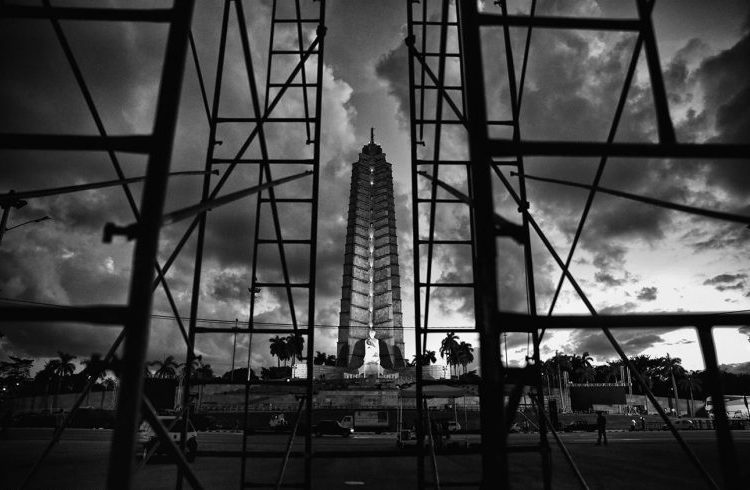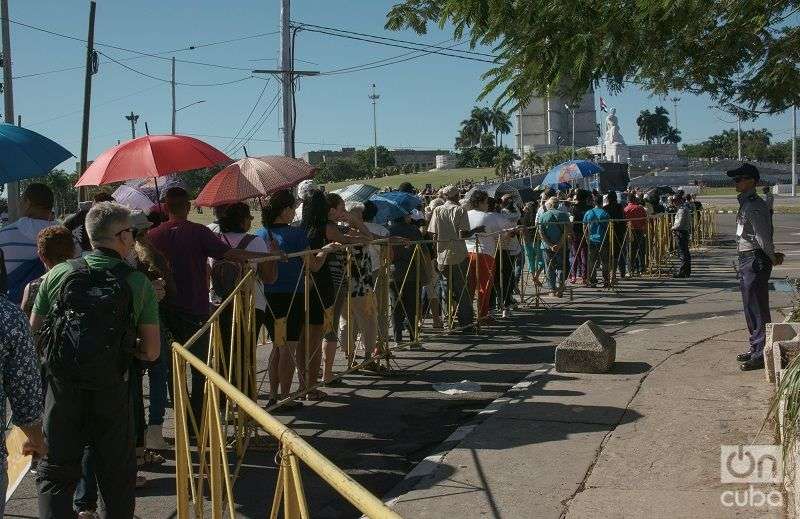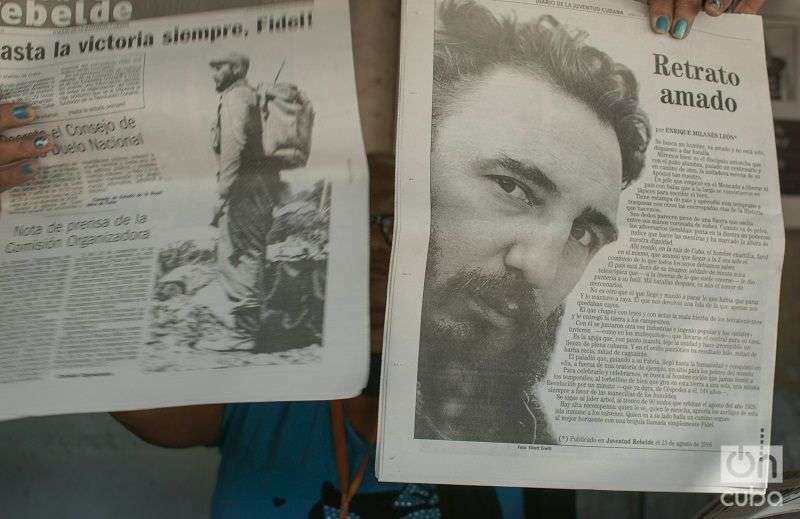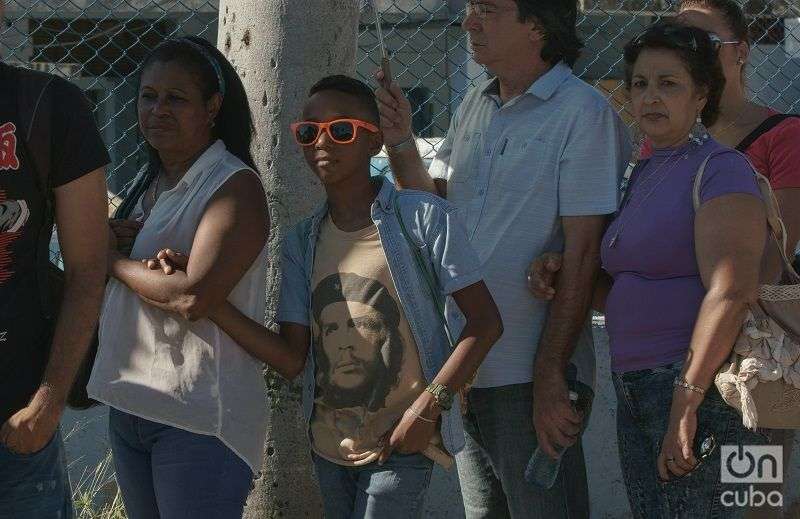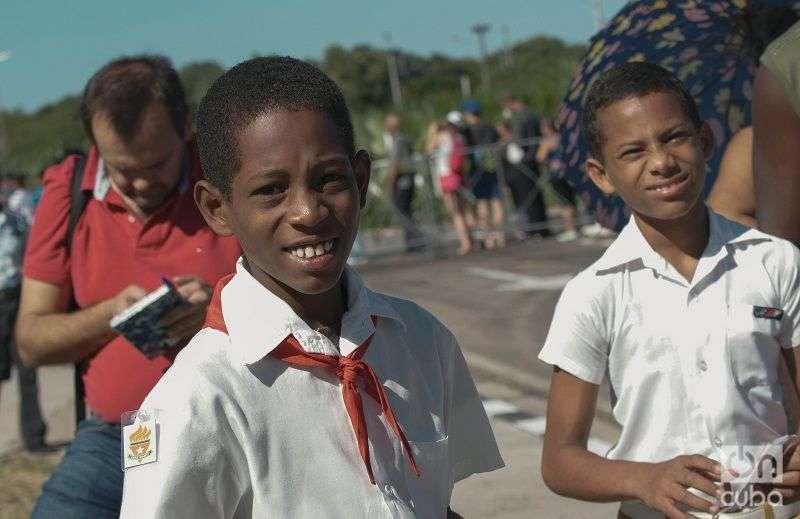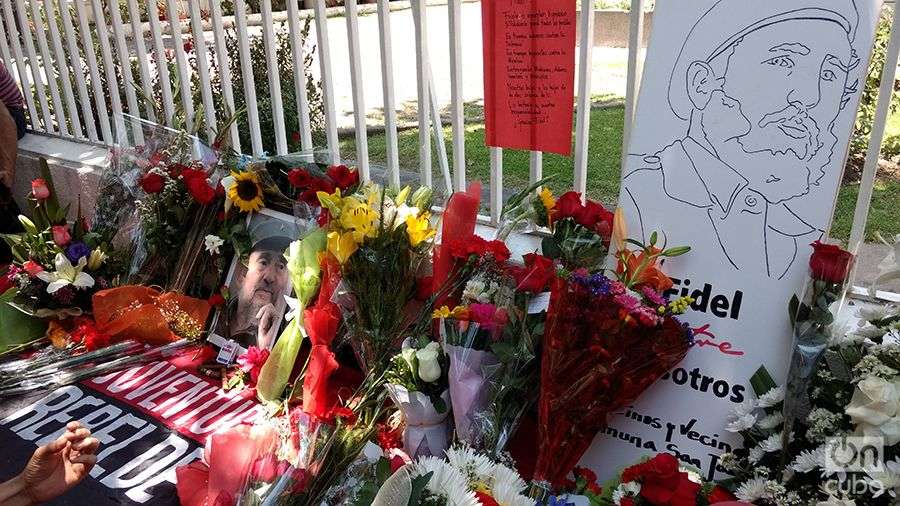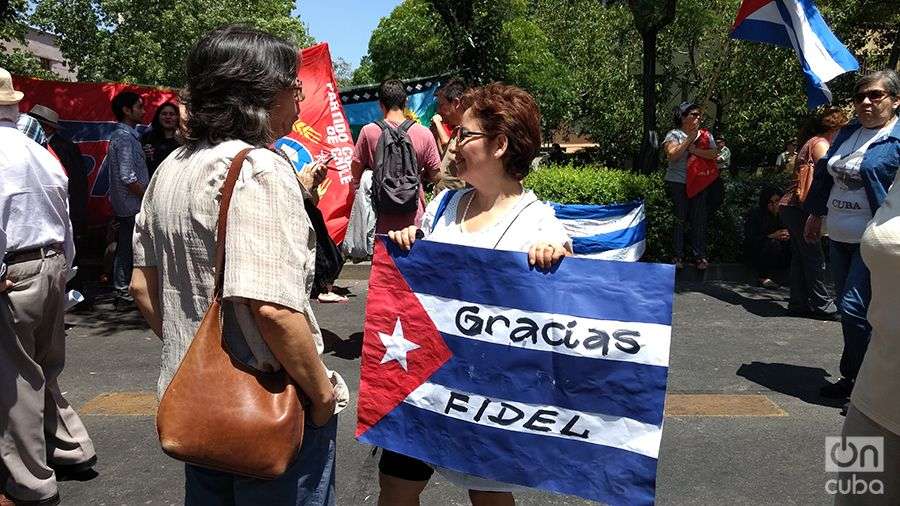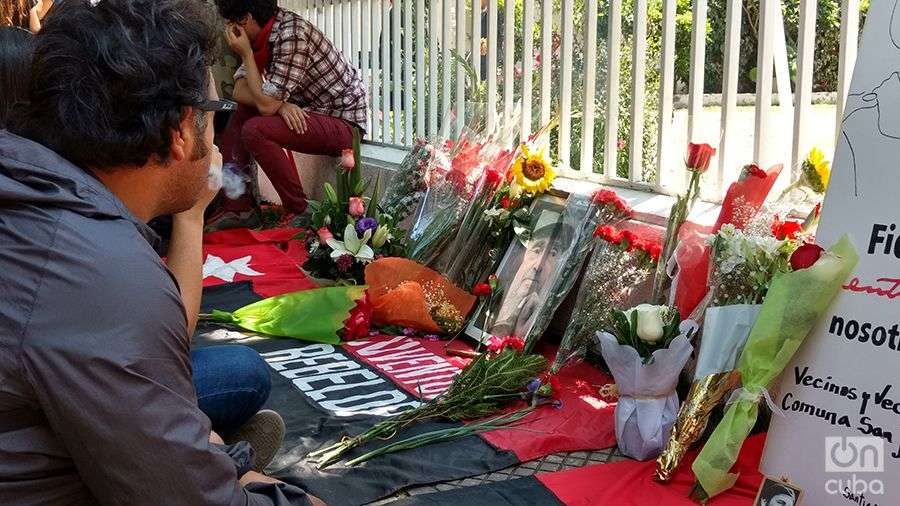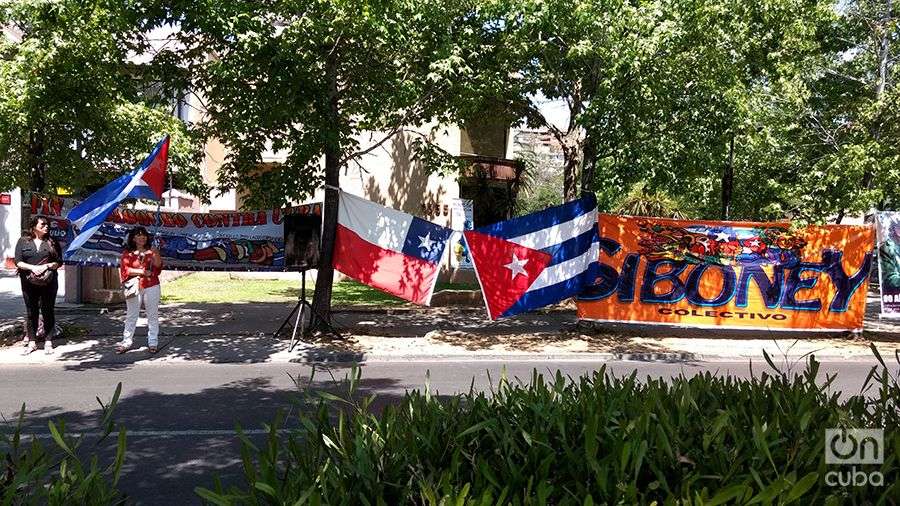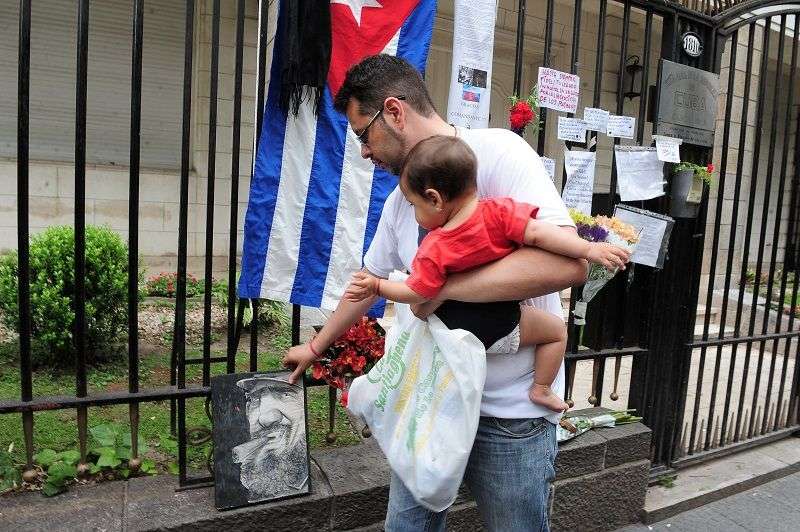On the first day of the funeral rites for Fidel Castro, as they did for decades to hear his speeches, thousands of persons have marched today to Plaza de la Revolución, in Havana. This time they come in silence.
A mass of people in line passes in front of the simple altar made up by one of his famous photos in the Sierra Maestra and white roses.
It is the third day of National Mourning decreed by the Council of State of the Republic of Cuba, which will last until 12:00 of Sunday December 4.
At 9 am, a 21-gun salute was fired simultaneously in Havana and Santiago de Cuba, the point of departure and destination, respectively, of the posthumous tribute to the Cuban leader.
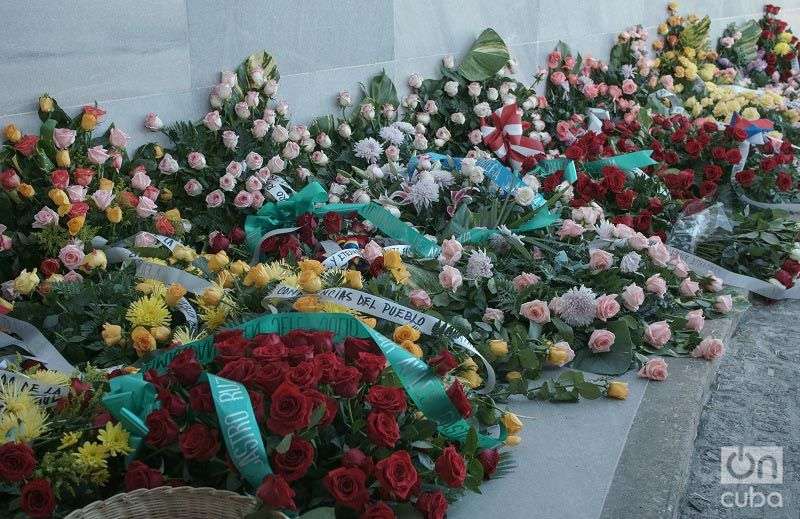
IN CUBA
The Cuban provincial media are reporting on the posthumous tribute to Fidel Castro taking place in each of the island’s public squares, where a space has been set aside to bid farewell to the leader of the Cuban Revolution.
In Sancti Spíritus the tribute to Fidel Castro includes the participation of dozens of thousands of persons in all the municipalities, the organizers of the tribute in the province confirmed to the newspaper Escambray. They said that “293 points have been set up to sign the oath and 14 places for the tribute.”
Thousands of Santiago residents are now paying a personal tribute to Fidel Castro. After the 21-gun salute at 9 am in the military headquarters of Santiago de Cuba, two of the city’s emblematic sites, Plaza de la Revolución Antonio Maceo and the Municipal City Hall, started receiving the long lines of persons.
In addition, there are more than 1,700 points set up for the people to express with their signature their condolences on the death of the revolutionary leader.
Silence and sorrow are two of the constant features among those who are paying tribute today, two logical reactions in the face of the circumstances but that are strange in a city used to a hustle and bustle and joy.
A mass rally dedicated to Fidel will also be held in Santiago de Cuba next Saturday December 3 at 7 pm in the Plaza de la Revolución Antonio Maceo and it is estimated that some 300,000 Santiago residents will attend. The presence of delegations from all the eastern provinces and of the island’s topmost government authorities is also previewed.
Before this, Fidel Castro’s ashes will travel through the city after their arrival there in the afternoon. For this an itinerary has been organized with departure and closure in the very plaza and which comprises three brief stops in the Plaza de Marte, the Moncada Barracks and Céspedes Park.
After the conclusion of the mass rally, Fidel’s ashes will remain in Santiago de Cuba’s Plaza de la Revolución where a wake will be held during the night. From there they will be taken at 7 am of December 4 to Santa Ifigenia Cemetery, on a route that will be accompanied by the public on both sides of the avenue leading to the cemetery. According to what has been announced until now, the ceremony in the cemetery will be restricted.
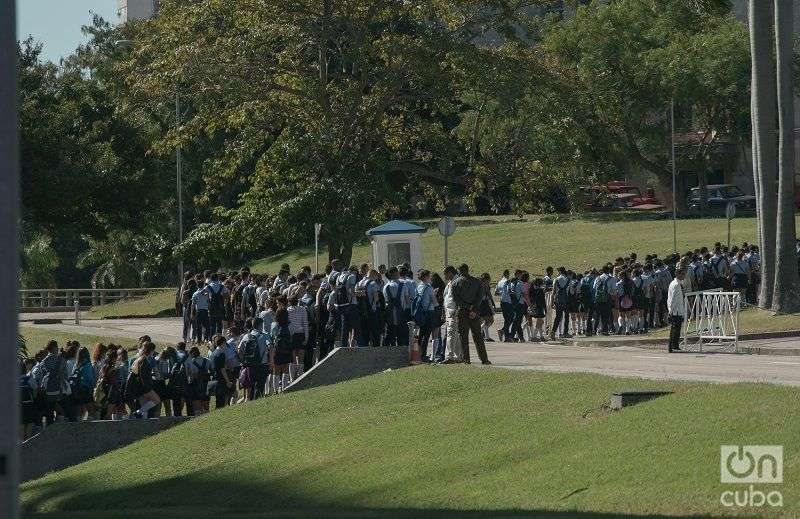
IN THE WORLD
Chile
Hundreds of Chileans are going to the Cuban consulate in Santiago to sign the book of condolences. Communist leaders like Camila Vallejo and Carol Cariola (who met with Fidel during a trip to Cuba) paid their tribute on Saturday.
During these days, dozens of the Revolution’s sympathizers, refugees in Cuba during the Pinochet dictatorship, doctors who graduated from the ELAM school of medicine in Cuba and Cuban residents in Chile take flowers, photos and posters, while songs are heard like the Communist International.
Mourning
Together with Cuba, several countries have decreed official mourning. The tribute extends beyond Latin America, where several presidents have openly expressed their admiration for the Cuban leader, to reach nations of Asia and Africa which have well-known links to the Cuban Revolution.
In Nicaragua, President Daniel Ortega decreed nine days of mourning, the same as on the island. In that nation a mass rally was carried our presided over by Ortega, recently reelected.
Venezuela, a political ally of Cuba for more than a decade, decreed three days of national mourning. The government communiqué recalled the historic links between both countries, strengthened under the government of the also deceased Hugo Chávez and maintained by his successor, Nicolás Maduro.
In Bolivia there will be seven days of mourning. This will not affect official or private activities, but establishes the hoisting of the flag with black bands in public buildings as a sign of national mourning.
Meanwhile, the day of mourning decreed by Uruguay was this Sunday. President Tabaré Vázquez regretted Fidel Castro’s death in a message published by the Secretariat of Institutional Communication.
Algerian President Abdelaziz Bouteflika expressed his sorrow at the death of Fidel Castro, whom he considered a personal friend, and decreed eight days of mourning in his country. “It is a great loss for the Algerian people, who have maintained a special relationship with the Commander, sustained on respect, admiration and mutual affection,” he said in a communiqué.
Also in northern Africa, the Democratic Saharawi Arab Republic established three days of national mourning starting Sunday.
In Asia, the Democratic People’s Republic of Korea began this Monday three days of official mourning. President Kim Jong-un sent a message of condolences to Cuba, and described Fidel Castro as “a close friend and comrade” of the North Korean people.
Finally, the Vietnamese authorities declared next Sunday December 4 as a day of national mourning. The day of mourning includes the traditional hoisting of the national flag at half-mast and the suspension on that day of the activities of entertainment in public places.
Buenos Aires
Images of the Cuban Embassy arrived from the Argentine capital, where since Saturday 26 hundreds of persons have approached to bid a last farewell to Fidel Castro. Messages of “Ever Onward” together with phrases by Martí and Silvio Rodríguez fill the railing of the mansion of the Buenos Aires neighborhood of Belgrano.
“I feel that the last great man of the 20th century has left us. Thanks to Cuba I studied medicine and today a try to help others,” said to OnCuba a young man from the province of Santa Fe who traveled close to 300 kilometers that separate his home from the building on Virrey de Pino Street to 1800.
In the media
Since Saturday the news of Fidel’s death took up the headlines worldwide. Analysts of important U.S. dailies have been reflecting since then on the impact of this figure on the politics of the last decades.
John Carlin, in his column in the Spanish daily El País, wanted to deal this Monday with the human aspect of the former Cuban president. Carlin affirmed that no one could doubt that Castro “was a colossus on the world scene” and that “he actually is unrivaled….”
Cuban economist Pavel Vidal Alejandro is the author of another analysis in El País, “A disproportionate economic legacy,” where he refers that Cuba “is a rare combination of first world social indicators with third world economic indicators.”
Vidal says that, although the “advances of the Cuban revolution in education, public health, security and equality are unquestionable,” Castro himself “used to say that the great feat of the Cuban Revolution was having achieved so much in social matters, Cuba being a poor country.”
Two days ago, among the articles of the Dossier on Fidel Castro, Anthony DePalma in one of his texts affirmed that Castro was possibly the most important leader of Latin America since the wars of independence in the early 19th century; and he undoubtedly was the one who influenced Cuban history the most after Jose Martí. He added that the Castro Revolution transformed Cuban society and had a much greater impact on the entire region than any other Latin American insurrection of the 20th century, with the possible exception of the 1910 Mexican Revolution.

